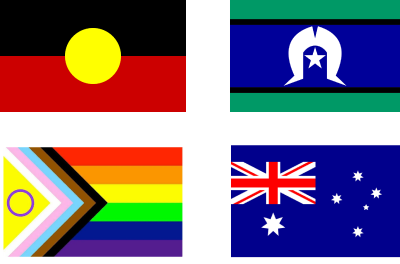
Join us as we move beyond the traditional notion of inclusivity and delve into the essence of emancipatory inclusion, in which all children receive an equitable and participatory learning experience.
Emancipatory inclusion is characterised by supports that allow children to communicate using their preferred method, and an environment where their presence and diverse perspectives and experiences are genuinely valued.
Inclusion is a concept that is often talked about, but rarely genuinely understood. And the same may be said of emancipation. In this video, I’m going to examine these intersecting ideologies in the context of education, and also address the interrelated concept of presuming competence or making the least dangerous assumption.
If you look up the word inclusion, the definition (as it relates to disability rights) is usually something along the lines of: “providing equal access to opportunities and resources for people who might otherwise be excluded or marginalised”. But this definition is fundamentally incorrect. Inclusion is the provision of equitable access, not equal access. Equal access implies that everyone should get the “same”; equitable implies that everyone gets what they need.
No doubt you’ve come across this graphic before to visualise this idea …

Image credit: Interaction Institute for Social Change | Artist: Angus Maguire
In this visual we begin to appreciate that everyone getting the same does not address the systemic barriers that face many people, and that it is only by insisting on equity that quality is ultimately achieved. In other words, for people to be equal or have equal opportunities, we must pursue equity.
The other problem with this definition of inclusion is that access to opportunities and resources is limited and ultimately passive. This is how that kind of inclusion is often visualised:

Image credit: Adapted from InclusionBC (2017), Implementing Inclusion in BC’s Public Schools (link here https://inclusionbc.org/wp-content/uploads/2018/11/Implementing_Inclusion_Education.pdf)
But this isn’t inclusion. This vision of inclusion is actually a vision of simply not having barriers that exclude: it captures the action of including, but not the genuine achievement of inclusion. Genuine inclusion requires a supportive energy and active commitment to the involvement of all people. Inclusion is more than simply allowing people within the circle, it requires actively facilitating all people to belong.

Image credit: Adapted from InclusionBC (2017), Implementing Inclusion in BC’s Public Schools (link here https://inclusionbc.org/wp-content/uploads/2018/11/Implementing_Inclusion_Education.pdf)
So, let’s think of the cornerstones of inclusion as equity, active involvement, and the belonging that comes from having your presence valued. In this sense, inclusion captures the disability phrase, “nothing about us, without us”.
What, then, makes inclusion emancipatory inclusion? Something becomes emancipatory when it builds individual autonomy and liberty, and this can be understood as both positive and negative liberty. Positive liberty is where we are free to do, and negative liberty is where we are free from impediment, coercion or interference. So, we can think of emancipation as the liberty or freedom to and freedom from. Emancipatory inclusion, then, can be thought of as dismantling the systemic barriers that curb or limit our freedom to be included.

Image credit: Interaction Institute for Social Change | Artist: Angus Maguire
And emancipatory inclusion encompasses political, financial and social inclusion.
In a school or educational context emancipatory inclusion dictates that a number of conditions are present and actively pursued across the school community:
When these conditions are met – when equitable and genuine inclusion is achieved through a commitment to a presumption of competence and to an unrestrictive learning environment, through social emotional learning for all, not only for a select few, and when Universal Design for Learning is executed with knowledge and precision – we begin to see the vision of genuine inclusion emerge.
This is the educational context we should be demanding for our Autistic children. It is no less than their right and absolutely what they deserve.

The Reframing Autism team would like to acknowledge the Traditional Owners of the lands on which we have the privilege to learn, work, and grow. Whilst we gather on many different parts of this Country, the RA team walk on the land of the Awabakal, Birpai, Whadjak, and Wiradjuri peoples.
We are committed to honouring the rich culture of the Aboriginal and Torres Strait Islander peoples of this Country, and the diversity and learning opportunities with which they provide us. We extend our gratitude and respect to all Aboriginal and Torres Strait Islander peoples, and to all Elders past and present, for their wisdom, their resilience, and for helping this Country to heal.